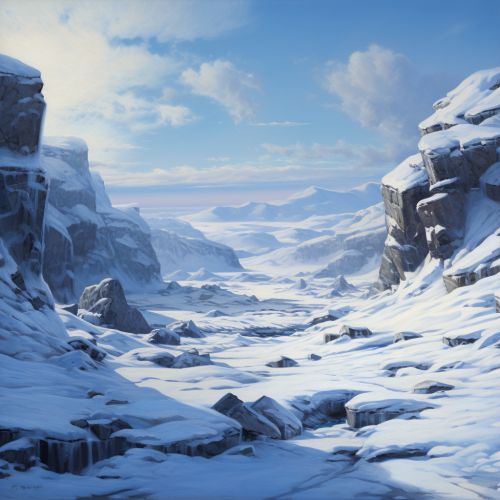Polar Climate
Introduction
The polar climate, also known as an ice cap climate, is characterized by long, extremely cold winters and short, cool summers. This climate is found in the high latitudes of the Arctic and Antarctic regions, as well as on high mountaintops. The polar climate is one of the Earth's harshest environments, with temperatures often dropping below freezing and remaining there for extended periods.


Characteristics
The polar climate is characterized by its extreme cold and lack of heat. The sun is often low in the sky, and in the depths of winter, it may not rise above the horizon at all. This results in a phenomenon known as the Polar Night, where the region experiences 24 hours of darkness. Conversely, during the summer months, the sun may not set, leading to the Midnight Sun phenomenon.
Temperature
Temperatures in the polar climate rarely rise above freezing. Even in the warmest month, temperatures are typically below 10 degrees Celsius (50 degrees Fahrenheit). In the coldest months, temperatures can drop to -40 degrees Celsius (-40 degrees Fahrenheit) or lower. The coldest temperature ever recorded on Earth, -89.2 degrees Celsius (-128.6 degrees Fahrenheit), was in the Antarctic at the Vostok Station.
Precipitation
Despite the cold temperatures, the polar climate is considered a desert due to the low amount of precipitation. The cold air cannot hold much moisture, leading to very little rainfall. Most of the precipitation that does occur falls as snow. The low precipitation and cold temperatures result in a landscape dominated by ice and snow.
Flora and Fauna
Despite the harsh conditions, a variety of plants and animals have adapted to survive in the polar climate. These include species such as the Polar Bear, Arctic Fox, Snowy Owl, and Reindeer in the Arctic, and Penguins, Seals, and various species of Whales in the Antarctic. Plant life is sparse, with only hardy species such as mosses, lichens, and some grasses able to survive.
Human Habitation
Human habitation in the polar climate is limited due to the harsh conditions. However, there are some communities, primarily in the Arctic, where people have adapted to the extreme environment. These include the Inuit people of northern Canada and Greenland, and the Sami people of northern Scandinavia. There are also a number of scientific research stations in both the Arctic and Antarctic.
Climate Change
The polar climate is particularly sensitive to climate change. Rising global temperatures are causing the ice caps to melt at an unprecedented rate, leading to rising sea levels and loss of habitat for polar species. This is also leading to changes in weather patterns, with potential impacts on global climate.
